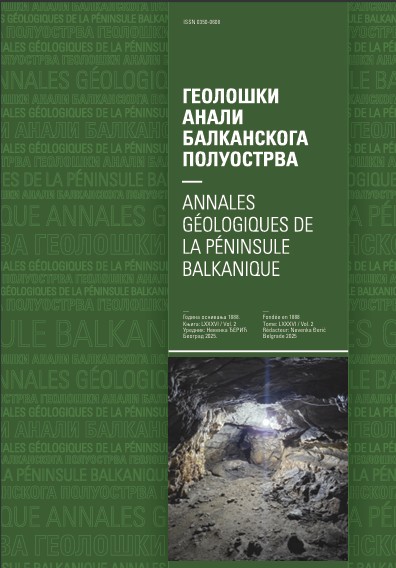The revision of Quaternary stratigraphy of the Zrenjanin artesian well borehole profile (Banat, Vojvodina, Serbia)
Abstract
The geological analysis of artesian borehole material from Sombor, Subotica, and Zrenjanin, was in the first campaign of detailed stratigraphic studies of Vojvodina in 1892-1895. The results of Quaternary stratigraphy from Zrenjanin were published by HalavAts m ore than a decade later (1914). The significance of the Zrenjanin, Sombor, and Subotica artesian well profiles for more than a century is considered the representative local profiles for the Quaternary stratigraphy of Vojvodina recognized by Serbian (Yugoslavian) and Hungarian geologists. Significant changes were after the taxonomical revision of molluscan material and its stratigraphic context, which was done through the excellent work of Krolopp in the 1970-ies. Unfortunately, the mentioned changes were not applied in the studies during the geological surveying of former Yugoslavia. The developments in Quaternary geology, changes in the Quater nary chronostratigraphic scale, and the results shown by this paper enable the Lower Pleistocene fluvial deposits to be defined as the Pleistocene Corbicula beds, the Viviparus boeckhi Horizon. The Lower Pleistocene at Zrenjanin was documented from 234.54 to 58.36 m depth. The interval between 234.54 and 208.50 m comprises the Upper Paludina - Viviparus vucotinovici zone, while the Viviparus boeckhi Horizons were identified between 135.18 m and 58.36 m. The interval between 58.36 m and 37.75 m is defined as Pleistocene (Lower- and Middle Pleistocene) based on sedimentological and the molluscan record. The interval from 37.75 m to 21.67 m depth was identified as Middle Pleistocene, according to its lithology and the paleontological material. The fluvial sediments’ 21.69 m and 7.31 m depths cannot be determined according to the faunistic data; we can only consider them as Pleistocene age. The Holocene sediment and soil horizons ascend to a 2.90 m depth.
Copyright (c) 2022 Geološki anali Balkanskoga poluostrva

This work is licensed under a Creative Commons Attribution 4.0 International License.










